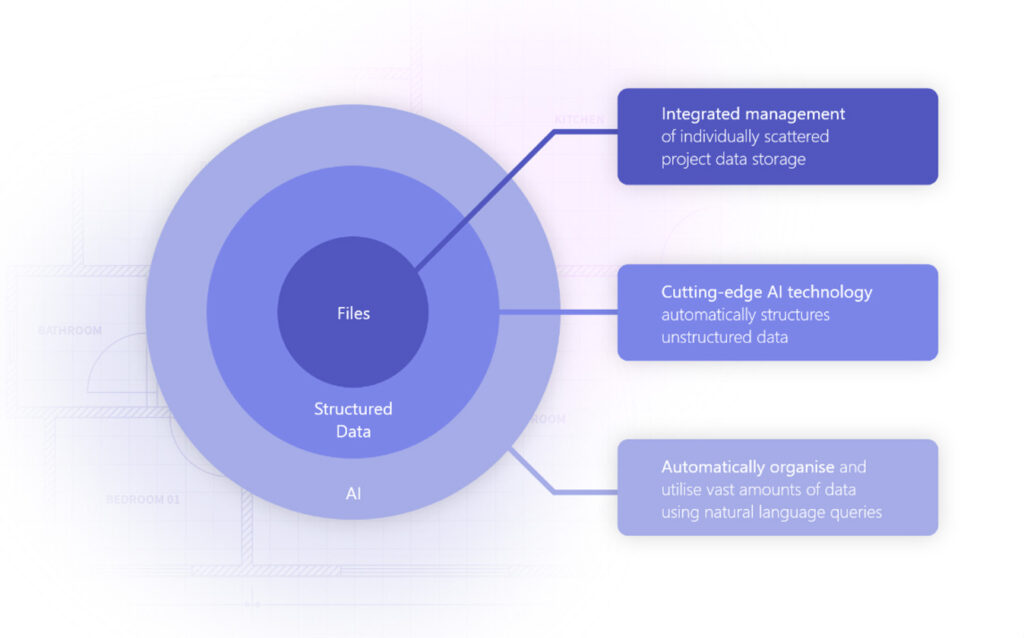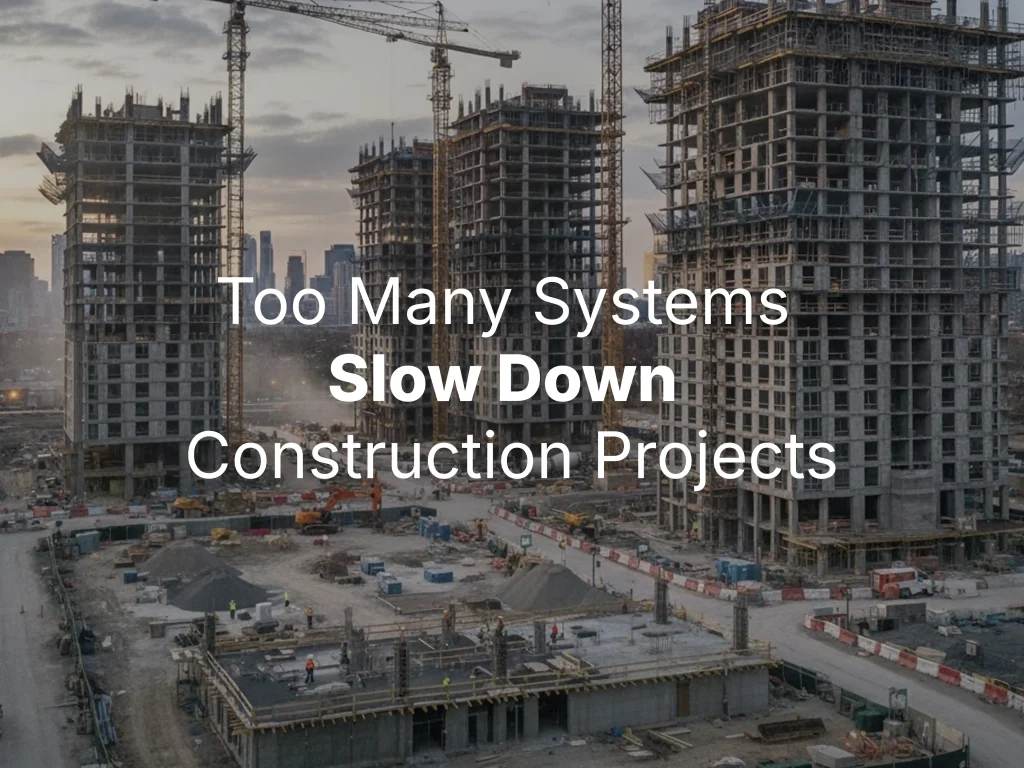Does the following sound familiar? You start your day needing a specific detail from a structural drawing. You check the project’s cloud storage, but the latest version isn’t there. You fire off an email to the architectural team, who point you to their own separate server. Meanwhile, the project manager is chasing a client requirement that was mentioned in a video call three weeks ago, and the quantity surveyor is trying to reconcile figures from a spreadsheet that doesn’t match the accounting software.
This daily scramble for information isn’t just frustrating, it’s a systemic problem. Many construction teams are struggling with fragmented systems, where critical project data is siloed across countless software platforms, servers, and storage tools. This digital chaos doesn’t just cause headaches – it actively slows projects down and eats into profits.
The Digital Maze: Just How Fragmented Are We?
The scale of this issue is bigger than many realise. Recent research from Deloitte highlights the challenge starkly: in 2025, the typical construction company uses a median of 11 different data environments to manage its projects. Think about that – eleven separate places where vital information like drawings, requirements, budgets, and schedules can be stored, often without talking to each other.
This fragmentation creates what are known as data silos. Each team (design, engineering, procurement, on-site) operates from its own island of information. As industry writer Stephen White notes,
Fragmented data is one of the most common culprits behind construction delays and rework. When teams rely on disparate tools and outdated documentation methods, information silos emerge, creating gaps in communication and decision-making.
When information can’t flow freely, collaboration breaks down, and the entire project suffers.
The Real Cost of Digital Chaos
This digital disarray has a very real human and financial cost. The time wasted navigating this maze is staggering. Studies have shown that managers can lose up to 1.5 days per week simply searching for project data across multiple systems. That’s more than a quarter of their working week spent on non-productive tasks before the real work can even begin.
The consequences ripple throughout the project lifecycle. When information is scattered and hard to verify, teams often resort to duplicate work, recreating documents or calculations that already exist somewhere else. More dangerously, decisions are often made with incomplete or outdated data because finding the latest update is too difficult. This leads directly to errors, miscommunication, and costly rework. In fact, a staggering 52% of all rework in construction is caused by poor project data and miscommunication.
The Software Versioning Trap
This problem becomes painfully clear when dealing with specialised design software. For example, a common headache for teams using Revit is version incompatibility. An architect might create a model in Revit 2024, but if the structural engineer is using Revit 2020, they simply cannot open the file. While it’s possible to open an older model in newer software, it requires a time-consuming ‘update’ process that can take 30 minutes or more, depending on the model’s size. This single technical hurdle can create significant bottlenecks, leaving team members unable to access critical design information when they need it most.
A Better Way: The Power of a Single Source of Truth
The solution to this chaos is to break down the silos and consolidate project data into a single, unified platform. This creates a ‘Single Source of Truth’ (SSOT) – one central hub where everyone can access the same up-to-date information.
As Andrew Anagnost, CEO of Autodesk, puts it,
the goal should be “keeping data at the center of your work because the data represents the most valuable asset you have, your intellectual property, your ideas”.
By treating data as a core asset and managing it centrally, you ensure that every decision is based on the complete, correct, and current picture.
How Tektome Builds Your Central Hub
This is precisely the problem Tektome was built to solve. Our platform is designed to be the central nervous system for your projects, unifying scattered information and turning it into accessible, actionable knowledge.

Tektome’s ReqManager centralises all project requirements into one traceable system. Instead of hunting through emails, meeting minutes, and legal documents, every requirement from the client, regulations, and internal standards is organised in one place. This ensures complete alignment and traceability from concept to completion.
Tektome’s KnowledgeBuilder unlocks the wisdom hidden in your past projects. It uses AI to automatically structure unstructured data from drawings, reports, and even handwritten notes, creating a searchable knowledge base. This prevents teams from reinventing the wheel and helps avoid repeating past mistakes.
Crucially, KnowledgeBuilder focuses on easier data access. By structuring the information within files, it allows teams to find and verify critical data without always needing the specific native software or version it was created in, helping to overcome the versioning trap. Looking ahead, Tektome is actively developing capabilities to read any Revit file, regardless of its version. While this feature is not yet available, its future release will bring significant benefits.
It will eliminate the delays and bottlenecks caused by version mismatches, allowing teams using different software versions to collaborate seamlessly. This means no more time-consuming model updates and instant access to critical design data for every stakeholder, further breaking down the barriers to efficient project delivery.
From Chaos to Clarity
Juggling too many systems is no longer a sustainable way to work. The delays, rework, and lost productivity are a clear drain on the efficiency and profitability of any construction project. By embracing a unified approach, you can eliminate data silos and empower your teams to collaborate seamlessly. With a platform like Tektome, you ensure that every requirement is tracked, every lesson is learned, and no critical insight ever falls through the cracks. If you’re interested to learn more on how our platform can help, drop us an email at info@tektome.com or head on to our home page to schedule a demo.

